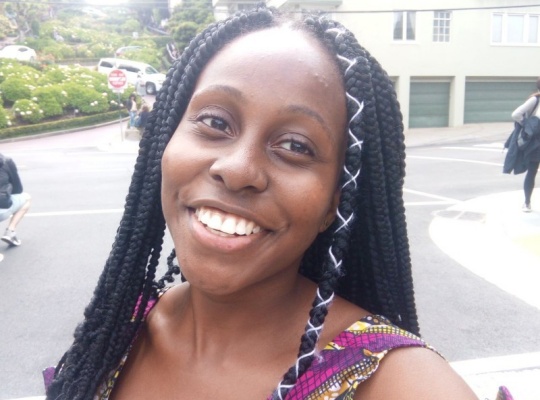Codetown
Codetown ::: a software developer's community
Kotlin Thursdays - Introduction to Functional Programming Part 2

Resources
- Higher-Order Functions and Lambdas:https://kotlinlang.org/docs/reference/lambdas.html
- FP in Kotlin Part 1: https://medium.com/kotlin-thursdays/functional-programming-in-kotli...
Introduction
Last week, we went over higher order functions in Kotlin. We learned how higher order functions can accept functions as parameters and are also able to return functions. This week, we will take a look at lambdas. Lambdas are another type of function and they are very popular in the functional programming world.
Logic & Data
Computer programs are made up of two parts: logic and data. Usually, logic is described in functions and data is passed to those functions. The functions do things with the data, and return a result. When we write a function we would typically create a named function. As we saw last week, this is a typical named function:
fun hello(name: String): String {
return "Hello, $name"
}
Then you can call this function:
fun main() {
println(hello("Matt"))
}
Which gives us the result:
Hello, Matt
Functions as Data
There is a concept in the functional programming world where functions are treated as data. Lambdas (functions as data) can do the same thing as named functions, but with lambdas, the content of a given function can be passed directly into other functions. A lambda can also be assigned to a variable as though it were just a value.
Lambda Syntax
Lambdas are similar to named functions but lambdas do not have a name and the lambda syntax looks a little different. Whereas a function in Kotlin would look like this:
fun hello() {
return "Hello World"
}
The lambda expression would look like this:
{ "Hello World" }
Here is an example with a parameter:
fun(name: String) {
return "Hello, ${name}"
}
The lambda version:
{ name: String -> "Hello, $name" }
You can call the lambda by passing the parameter to it in parentheses after the last curly brace:
{ name: String -> "Hello, $name" }("Matt")
It’s also possible to assign a lambda to a variable:
val hello = { name: String -> "Hello, $name" }
You can then call the variable the lambda has been assigned to, just as if it was a named function:
hello("Matt")
Lambdas provide us with a convenient way to pass logic into other functions without having to define that logic in a named function. This is very useful when processing lists or arrays of data. We’ll take a look at processing lists with lambdas in the next post!
Tags:
Replies to This Discussion
Notes
Welcome to Codetown!
 Codetown is a social network. It's got blogs, forums, groups, personal pages and more! You might think of Codetown as a funky camper van with lots of compartments for your stuff and a great multimedia system, too! Best of all, Codetown has room for all of your friends.
Codetown is a social network. It's got blogs, forums, groups, personal pages and more! You might think of Codetown as a funky camper van with lots of compartments for your stuff and a great multimedia system, too! Best of all, Codetown has room for all of your friends.
Created by Michael Levin Dec 18, 2008 at 6:56pm. Last updated by Michael Levin May 4, 2018.
Looking for Jobs or Staff?
Check out the Codetown Jobs group.
InfoQ Reading List
Inside the Development Workflow of Claude Code's Creator

Claude Code's creator Boris Cherny described how he uses it at Anthropic, highlighting practices such as running parallel instances, sharing learnings, automating prompting, and rigorously verifying results to compound productivity over time.
By Sergio De SimoneNVIDIA Releases Open Models, Datasets, and Tools Across AI, Robotics, and Autonomous Driving

NVIDIA has released a set of open models, datasets, and development tools covering language, agentic systems, robotics, autonomous driving, and biomedical research. The update expands several existing NVIDIA model families and makes accompanying training data and reference implementations available through GitHub, Hugging Face, and NVIDIA’s developer platforms.
By Robert KrzaczyńskiMongoBleed Vulnerability Allows Attackers to Read Data From MongoDB's Heap Memory

MongoDB recently patched CVE-2025-14847, a vulnerability affecting multiple supported and legacy MongoDB Server versions. According to the disclosure, the flaw can be exploited remotely by unauthenticated attackers with low complexity, potentially leading to the exfiltration of sensitive data and credentials.
By Renato LosioPresentation: Fast Eventual Consistency: Inside Corrosion, the Distributed System Powering Fly.io

Somtochi Onyekwere explains the architecture of Corrosion, a distributed system designed for low-latency state replication. She shares how Fly.io transitioned from Consul to a gossip-based SQLite solution to handle global machine data. By discussing CRDTs, the SWIM protocol, and QUIC, she shares how to build resilient systems that prioritize speed while managing the complexities of CAP theorem.
By Somtochi OnyekwereMini book: The InfoQ Trends Reports 2025 eMag

This special edition of The InfoQ eMag, contains a comprehensive collection of our popular InfoQ Trends Reports from 2025, a year with both evolution and revolution within the landscapes of technology, software development trends. This collection does not just reflect the past year's technological trends. We aspire to use it as a guide for future exploration and innovation.
By InfoQ
© 2026 Created by Michael Levin.
Powered by
![]()